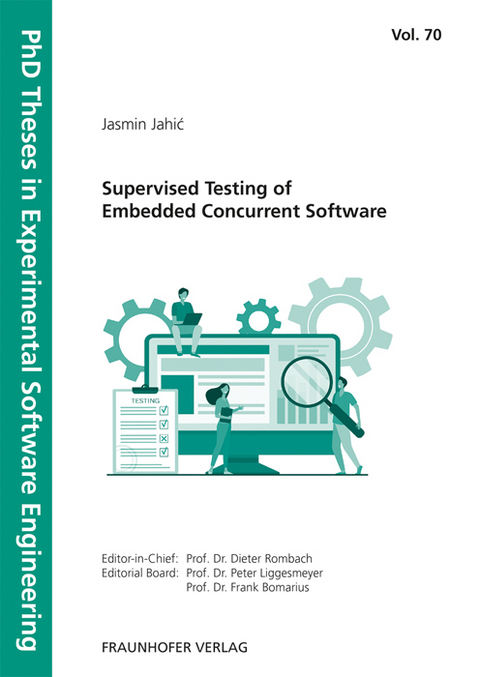
Supervised Testing of Embedded Concurrent Software
Seiten
2021
Fraunhofer Verlag
9783839616833 (ISBN)
Fraunhofer Verlag
9783839616833 (ISBN)
This work provides means for a better understanding of the actions involved in the software testing of concurrent embedded systems. It complements the existing approaches for concurrency bug dynamic analysis with models of concurrency limitations present in the embedded systems domain and improves their precision, where the main evaluation criterion is the number of false positives.
Scientists and practitioners have developed approaches for testing sequential software. However, there is a gap in the current state of the art regarding the understanding and formulation of a general approach for testing concurrent software, especially in domains that limit concurrency, such as the domain of embedded software systems. Consequently, testing approaches fail to separate faulty and correct behavior of such software, leading to many false warnings. Besides, as there exist no appropriate code coverage criteria for concurrent software, existing approaches can miss some concurrency faults. This dissertation presents a generalized model of an approach for finding concurrency bugs, based on a systematic literature review. By comparing the generalized model and architectural drivers in embedded systems, this work identifies key reasons why the existing approaches report too many false warnings when testing embedded concurrent software. For these challenges, this work offers solutions in terms of enhancements to: i) the existing analysis algorithms, ii) the execution tracing techniques, and iii) coverage of concurrent software interleavings.
Scientists and practitioners have developed approaches for testing sequential software. However, there is a gap in the current state of the art regarding the understanding and formulation of a general approach for testing concurrent software, especially in domains that limit concurrency, such as the domain of embedded software systems. Consequently, testing approaches fail to separate faulty and correct behavior of such software, leading to many false warnings. Besides, as there exist no appropriate code coverage criteria for concurrent software, existing approaches can miss some concurrency faults. This dissertation presents a generalized model of an approach for finding concurrency bugs, based on a systematic literature review. By comparing the generalized model and architectural drivers in embedded systems, this work identifies key reasons why the existing approaches report too many false warnings when testing embedded concurrent software. For these challenges, this work offers solutions in terms of enhancements to: i) the existing analysis algorithms, ii) the execution tracing techniques, and iii) coverage of concurrent software interleavings.
| Erscheinungsdatum | 14.04.2021 |
|---|---|
| Reihe/Serie | PhD Theses in Experimental Software Engineering ; 70 |
| Zusatzinfo | num. illus. and tab. |
| Verlagsort | Stuttgart |
| Sprache | englisch |
| Maße | 170 x 240 mm |
| Themenwelt | Informatik ► Software Entwicklung ► Qualität / Testen |
| Informatik ► Weitere Themen ► Hardware | |
| Schlagworte | B • Computer Modelling and Simulation • Computing and information technology • Embedded Systems • Fraunhofer IESE • Informatiker • Software engineering • Software testing and verification • Wissenschaftler |
| ISBN-13 | 9783839616833 / 9783839616833 |
| Zustand | Neuware |
| Informationen gemäß Produktsicherheitsverordnung (GPSR) | |
| Haben Sie eine Frage zum Produkt? |
Mehr entdecken
aus dem Bereich
aus dem Bereich
Aus- und Weiterbildung zum Certified Tester – Foundation Level nach …
Buch | Hardcover (2024)
dpunkt (Verlag)
CHF 55,85
Qualität von und mit KI-basierten Systemen
Buch | Hardcover (2023)
dpunkt (Verlag)
CHF 48,85
Methoden und Techniken für Softwarequalität in der agilen Welt
Buch | Hardcover (2023)
dpunkt (Verlag)
CHF 55,85


